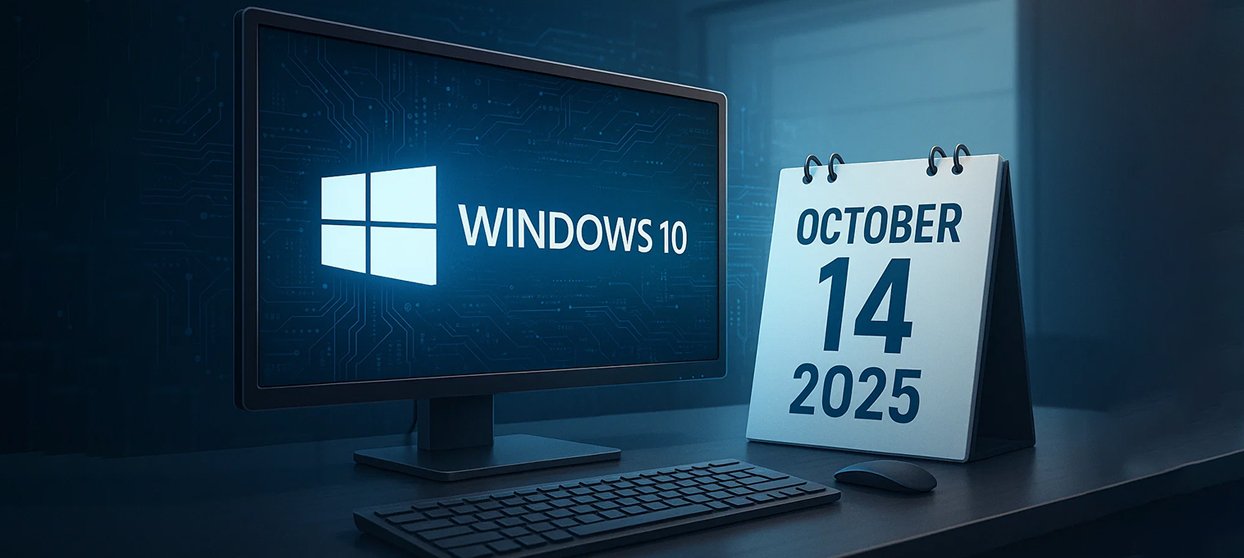
by Abdullah Al Noman
After a decade of service, Microsoft’s popular operating system reaches its final chapter
Microsoft has announced that Windows 10 will reach its end of support on October 14, 2025, marking the conclusion of one of the company’s most successful operating systems. Users worldwide must now decide whether to upgrade to Windows 11 or continue using their current system with increased security risks. So far Microsoft Windows OS versions (XP, Vista, 7, 8/8.1, 10) that are already fully out of support or soon will be.
What Does End of Support Mean?
End of support means that Microsoft will no longer provide technical assistance, software updates, or security patches for Windows 10. While the operating system itself will continue to function, it will no longer receive the regular updates that have kept it secure and stable since its launch in 2015.
This doesn’t mean Microsoft is abandoning users overnight. The company has been providing advance notice for years, encouraging users to transition to Windows 11, which launched in October 2021. However, for millions of users still running Windows 10, the clock is now ticking.
Will My Windows 10 Computer Stop Working?
The short answer is no—your computer will not suddenly stop working after October 14, 2025. You’ll still be able to turn on your device, access your files, run programs, and use your computer just as you do today. Windows 10 will continue to boot up and function normally.
However, the longer answer is more nuanced and concerning. Without ongoing security updates, your computer will become increasingly vulnerable to cyber threats. Think of it like living in a house where you’ve stopped maintaining the locks—the house still stands, but it’s no longer secure.
What could be the potential Threats using end of support/outdated Operating System?
Using an operating system without security updates is dangerous because it leaves your computer open to serious risks. any new security flaws will remain unpatched, making it easier for hackers to spread malware and ransomware. This can lead to data theft, putting your personal information, passwords, and banking details at risk—just like over the years, several major viruses have caused massive damage to Windows systems worldwide. The ILOVEYOU virus (2000) spread through email attachments and caused an estimated $15 billion in damages. The Mydoom worm (2004) became one of the fastest-spreading email worms ever, inflicting around $38 billion in losses. The Sasser worm (2004) exploited a Windows vulnerability and disrupted airlines, banks, and hospitals, costing about $18 billion. The Conficker worm (2008) infected millions of computers globally, leading to roughly $9 billion in damages. The WannaCry ransomware (2017), which exploited outdated Windows systems, encrypted data across 150 countries and caused over $4 billion in losses. Similarly, NotPetya (2017) crippled major corporations and government systems, leading to damages exceeding $10 billion. These attacks highlight how unpatched Windows systems remain prime targets for cybercriminals, emphasizing the importance of timely updates and modern security practices.
Alternative: The Extended Security Updates Program
For users who cannot immediately upgrade, Microsoft is offering an Extended Security Updates (ESU) program for Windows 10. This paid service will provide critical security updates for an additional year, though pricing and availability details are still being finalized. However, this is intended as a temporary bridge, not a long-term solution.
Making the Transition
The end of Windows 10 support represents a significant moment in computing history. While change can be challenging, upgrading to Windows 11 or purchasing a new computer ensures you’ll continue to have a secure, supported, and modern computing experience for years to come.
For more information about Windows 10 end of support and upgrading to Windows 11, visit Microsoft’s official website or consult with a trusted technology professional.







